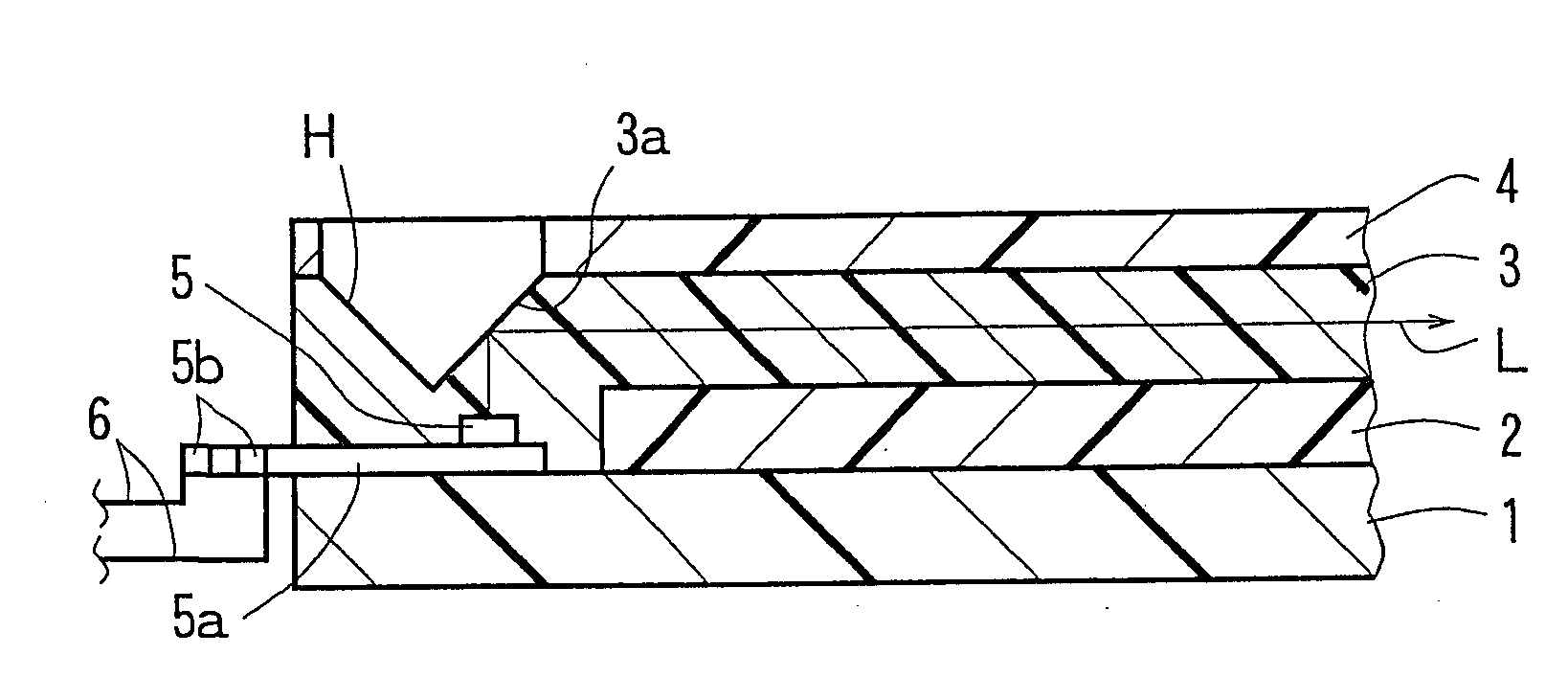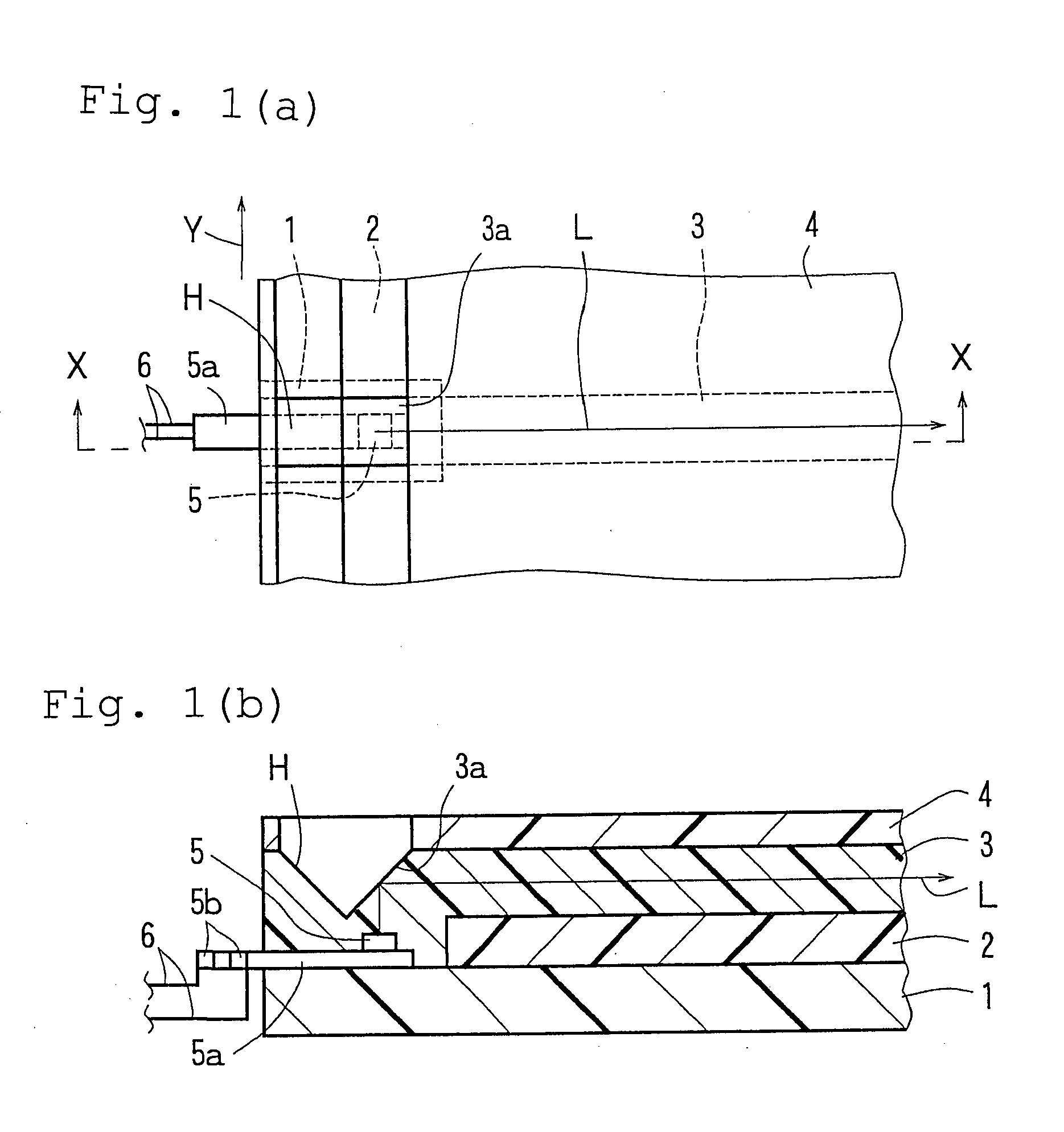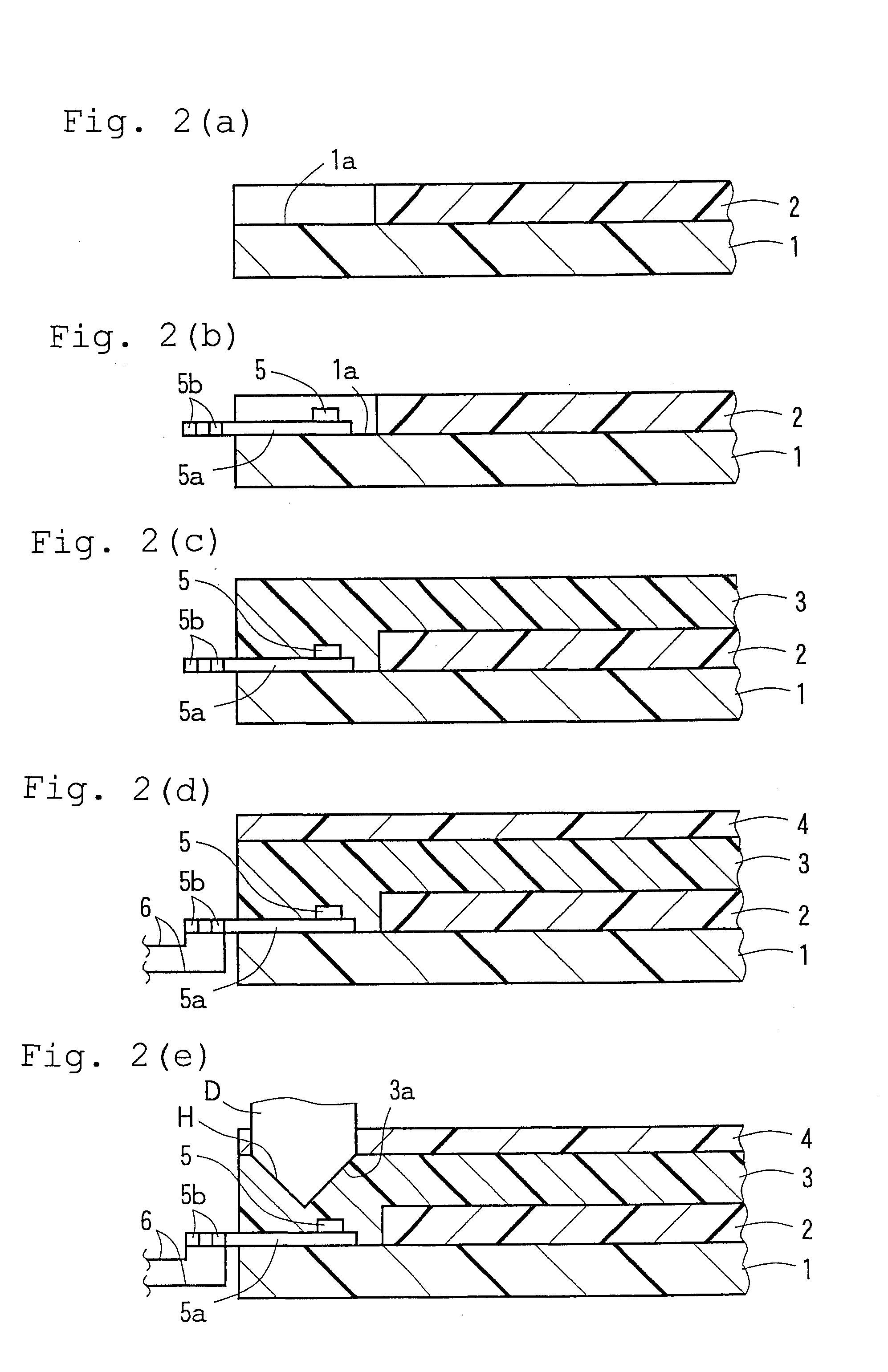Optical waveguide device and manufacturing method thereof
a technology of optical waveguides and manufacturing methods, applied in the direction of optical waveguide light guides, optical elements, instruments, etc., can solve the problems of affecting the optical path, affecting the insertion of adhesives, etc., and achieve the effect of accurately and easily forming the reflection surface in position, and easy positioning
- Summary
- Abstract
- Description
- Claims
- Application Information
AI Technical Summary
Benefits of technology
Problems solved by technology
Method used
Image
Examples
example
Material for Formation of Under-Cladding Layer and Over-Cladding Layer
[0043]A material for formation of an under-cladding layer and an over-cladding layer was prepared by mixing 35 parts by weight of bisphenoxyethanolfluorene diglycidyl ether (Component A), 40 parts by weight of 3′,4′-Epoxycyclohexylmethyl-3,4-Epoxycyclohexane carboxylate which is an alicyclic epoxy resin (CELLOXIDE 2021P manufactured by Daicel Chemical Industries, Ltd.) (component B), 25 parts by weight of (3′,4′-Epoxycyclohexane)methyl-3′,4′-Epoxycyclohexyl-carboxylate (CELLOXIDE 2081 manufactured by Daicel Chemical Industries, Ltd.) (component C), and 1 part by weight of a 50% propione carbonate solution of 4,4′-bis[di(β-hydroxyethoxy)phenylsulfinio]phenylsulfide bishexafluoroantimonate (photoacid generator, Component D).
Material for Formation of Core
[0044]A material for formation of a core was prepared by dissolving 70 parts by weight of the aforementioned component A, 30 parts by weight of 1,3,3-tris{4-[2-(3-ox...
PUM
 Login to View More
Login to View More Abstract
Description
Claims
Application Information
 Login to View More
Login to View More - R&D
- Intellectual Property
- Life Sciences
- Materials
- Tech Scout
- Unparalleled Data Quality
- Higher Quality Content
- 60% Fewer Hallucinations
Browse by: Latest US Patents, China's latest patents, Technical Efficacy Thesaurus, Application Domain, Technology Topic, Popular Technical Reports.
© 2025 PatSnap. All rights reserved.Legal|Privacy policy|Modern Slavery Act Transparency Statement|Sitemap|About US| Contact US: help@patsnap.com



